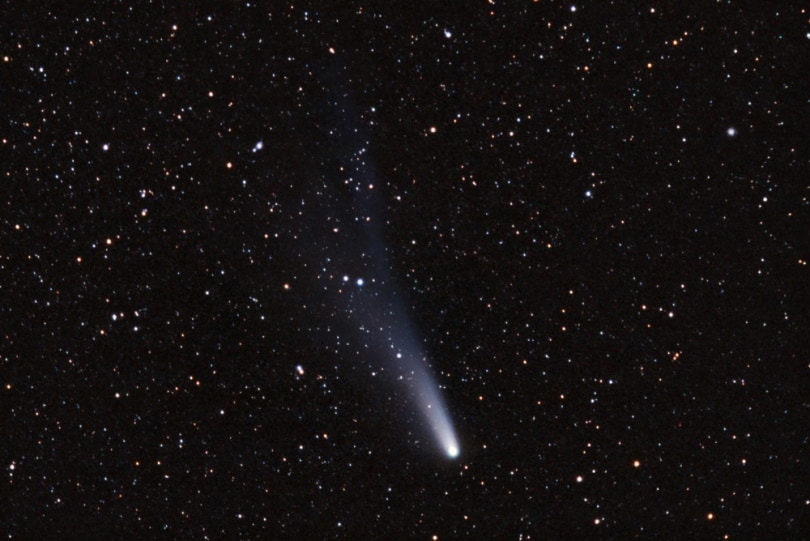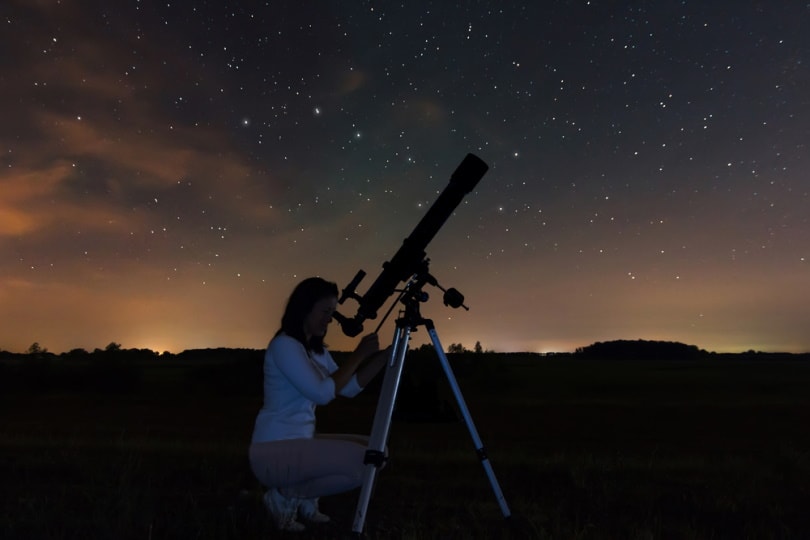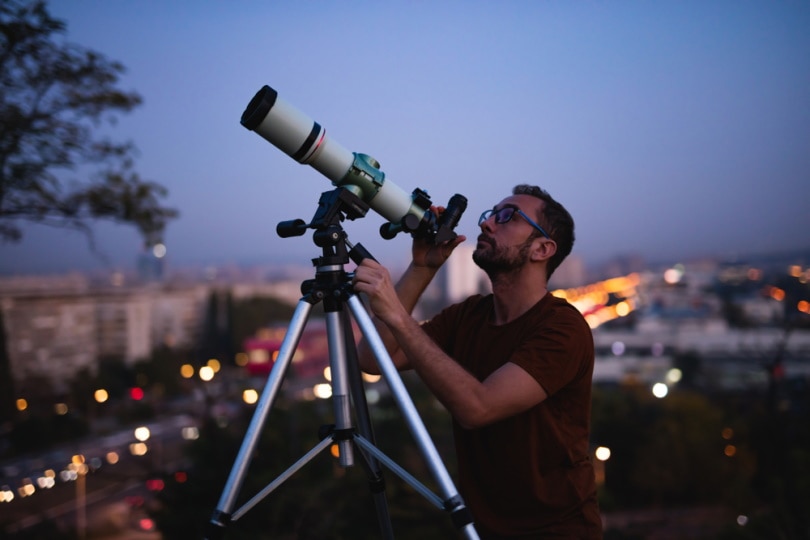Halley’s Comet – Everything You Need To Know
Last Updated on

Even the people who are not big fans of astronomy have heard about Halley’s Comet. It’s one of the most popular comets known to mankind and many people over the centuries had the honor to catch a glimpse of it while traveling through the sky.
It appears as a large bright light, followed by a stunning shimmery tail. If you’d like to know more about the most famous comet in the world, check out the rest of our article to expand your comet knowledge.

What is Halley’s Comet?
The Halley’s Comet is a short-period comet, meaning that it returns to our orbit in less than 200 years. To be precise, our orbit gets to “host” the Halley’s Comet every 75 years so that every person can see the comet twice during their lifetime. Like most short-period comets, the Halley’s Comet comes from the Kuiper Belt, although some astronomers believe it has origins in the Oort cloud.
This comet got its name after an English astronomer Edmond Halley. He started examining reports of a comet approaching the Earth between 1531, 1607, and 1682. After his research, he concluded that these three comet occurrences were actually the same comet that kept returning into our orbit.
He predicted that the comet would return in 1758, and even though he didn’t live to see the comet return, his predictions were accurate. That’s why, in his honor, the comet got its unique name—Halley’s Comet.

Characteristics
Halley’s Comet is large and bright, especially compared to other comets. Its structure is made of a nucleus and coma. The nucleus resembles a peanut in shape and is 9 miles long, which is why many astronomers call it the “giant kite.” The trajectory of this “kite” has a total length of over several million miles.
This comet’s core contains various elements such as methane, carbon monoxide and dioxide, water, ammonia, formaldehyde, and hydrocyanic acid.
The History Behind Halley’s Comet
One of the first known observations of this comet dates back to 239 B.C, where Chinese astronomers documented its passage in the Wen Hsien Thung Khao and Shih Chi chronicles. A study also states the first observation happened in 466 B.C.
As Halley’s comet returned in 164 B.C and 87 B.C, those occurrences were likely recorded in Babylonian notes found in the British Museum in London. Some people believe that an Italian painter, Giotto, created his “Star of Bethlehem” after encountering Halley’s Comet in 1301.
Before modern times, most people feared comets and considered them a sign of bad luck and evil spirits, while some regarded them as an omen of success. In 1066, after the invasion of England, William the Conqueror saw the comet and claimed it was a herald of his triumph.

When Did Halley’s Comet Last Appear?
The last appearance of Halley’s Comet happened in 1986. Before its arrival, astronomers used the Hale Telescope to catch images of the comet while it was approaching Saturn’s orbit.
In March 1889, five spacecraft were sent into space to fly next to the comet so that they could study it up close. The technology in those times was well-developed, so astronomers could take images and determine what Halley’s Comet is made of, which was a fascinating attempt in such early years.
When Will it Return?
Currently, you can notice Halley’s Comet in the constellation of Hydra at a distance of millions of miles from Earth. The next year when the comet should “visit” the Earth is 2061, and it’s supposed to be positioned well for observation.


Final Thoughts
People worldwide are anxiously waiting for 2061 to get a chance to see this stunning comet flying through the sky. Although it might seem like a long time to wait for such a phenomenon to happen, it’s well worth it, so you shouldn’t miss out on this lifetime opportunity!
Featured Image Credit: Brian Donovan, Shutterstock
About the Author Visnja Radosavljevic
Visnja is a creative, adaptable content writer that covers various topics such as DIY, pets, home improvement, travel, gardening, and more. As a young mom and a college student, she didn’t have enough time to balance her personal and work life, so after multiple years of working a regular 9 to 5 job, she decided to pursue her passion and make a living out of it. She has been writing for a couple of years now, helping people to find valuable and interesting information online.
Related Articles:
Can You Use Binoculars to Look At Stars? How to Choose the Right Pair
15 Crucial Facts About Ultraviolet Rays & the Sun
What Constellation Is Spica In? The Interesting Answer!
10 Interesting Leo Constellation Facts, Myths, and FAQs
15 Interesting Pegasus Constellation Facts, Myths, and FAQs
6 Interesting Sagittarius Constellation Facts, Myths, and FAQs in 2024!
What Are Constellations? Where Did They Come From?
8 Interesting Libra Constellation Facts, Myths, and FAQs
